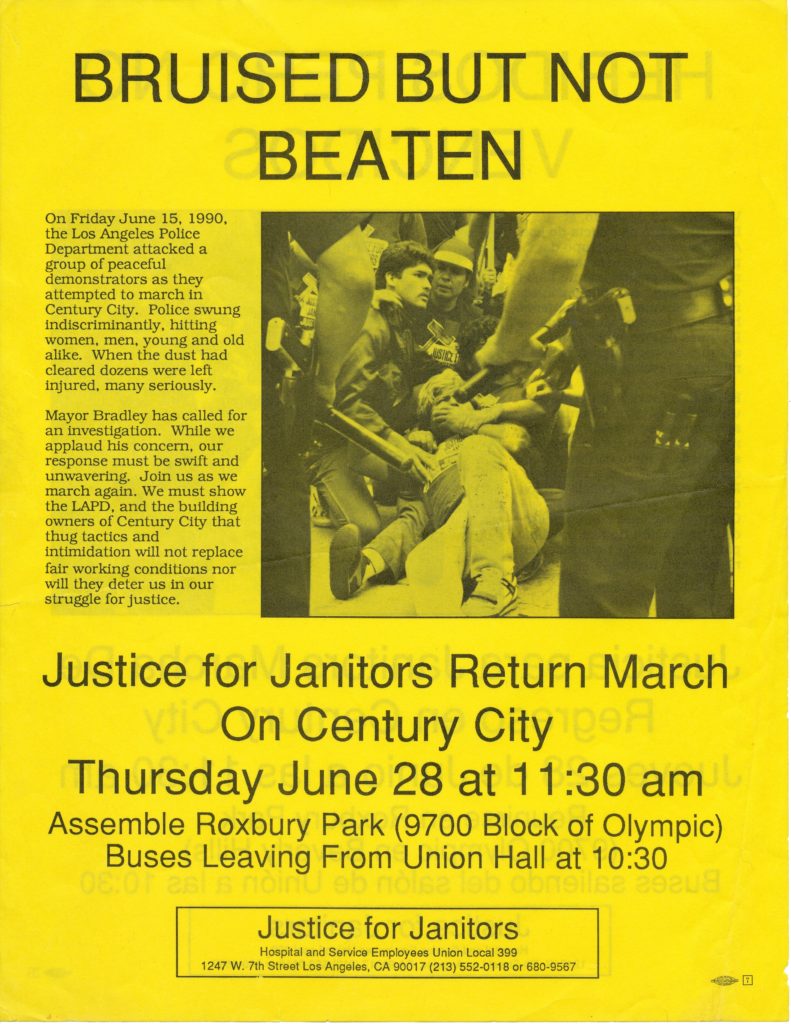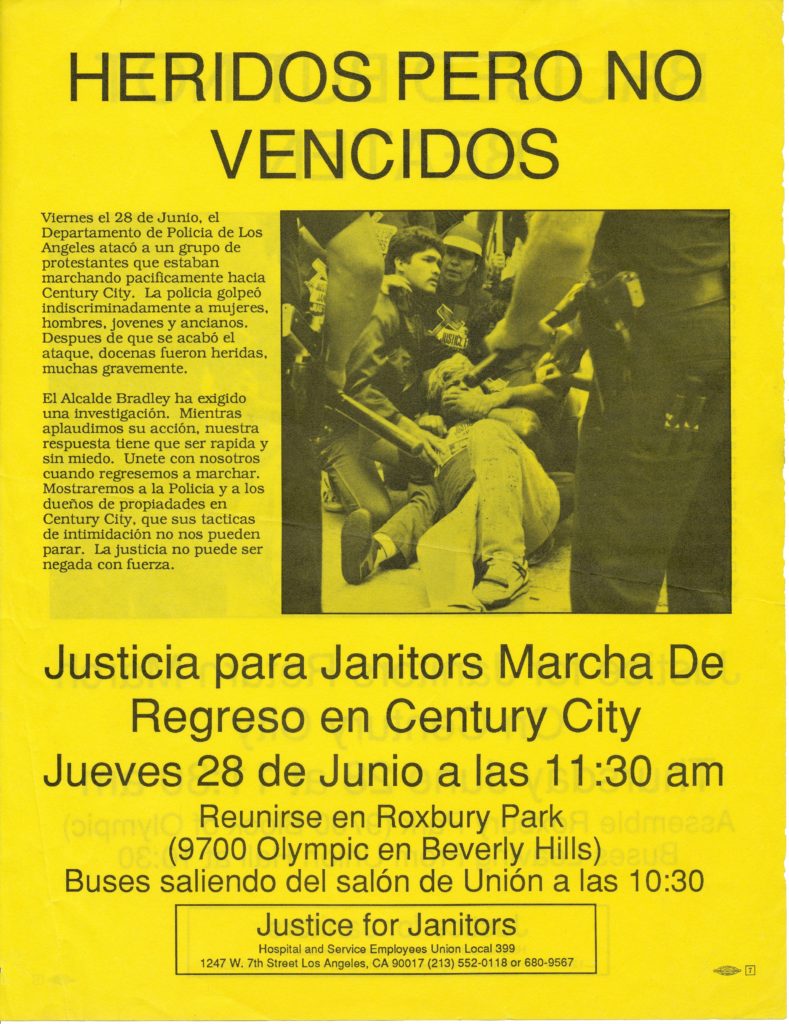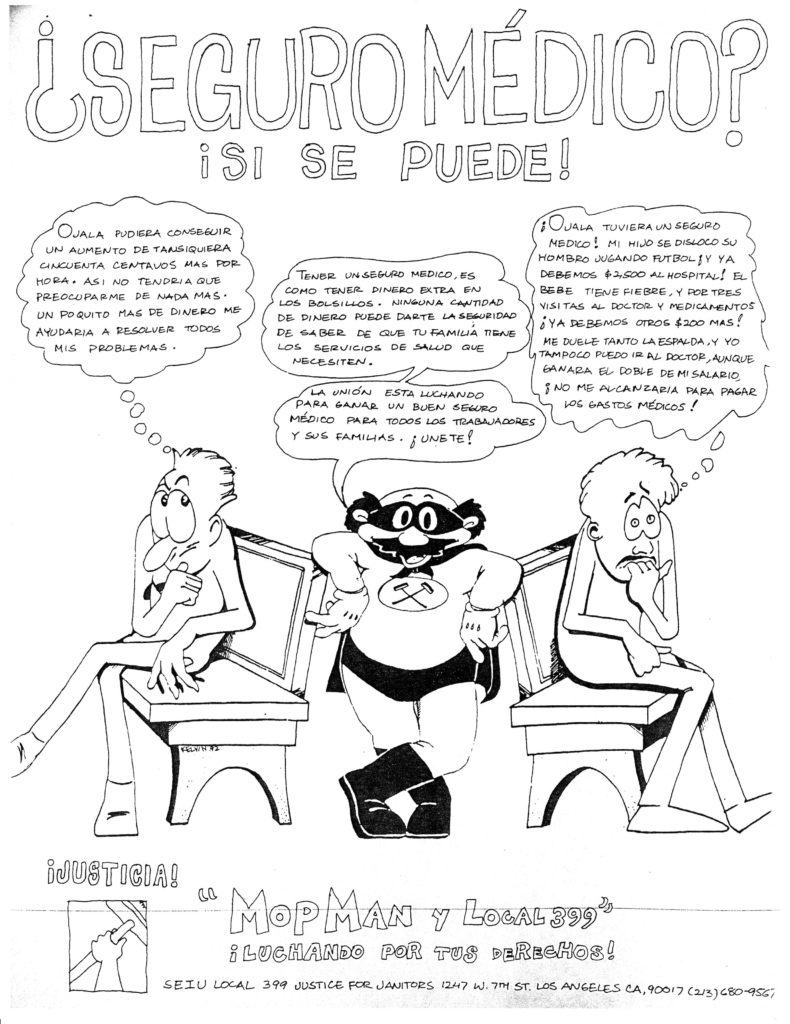On June 15, 1990, the LAPD armed with nightsticks attacked group of peaceful demonstrators outside Century City that included women and children. Not intimidated by police brutality, the demonstrators continued to protest until fair working conditions were given.
Police disrupt janitors march on Century City, June 1990
During a 1990 strike against cleaning contractors in the Century City office complex, Los Angeles police confront and beat janitors and their supporters. The confrontation led to a city inquiry into police officers’ actions, and a settlement between janitors and their employers. This video compilation was produced by the Service Employees International Union (SEIU) and shared with other locals on VCR tapes before being converted to digital and distributed via YouTube.
Seguro Medico? Si Se Puede! Mopman y Local 399 Luchando por tus Derechos!
In this cartoon from the Justice for Janitors campaign, two workers worry about the cost of healthcare. The superhero Mopman tells them that having good health insurance is like “having extra money in your pockets.” In cartoons and street theater, the character Mopman was part of the union’s strategy to reach rank-and-file janitors.
Unions review impact of immigration reform
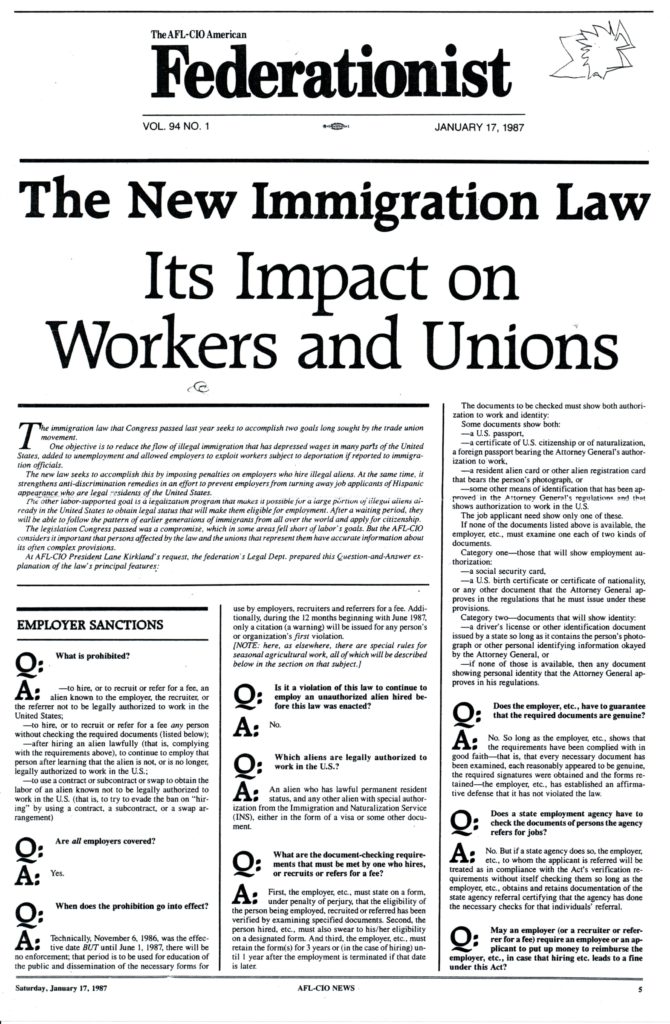
The AFL-CIO published this information for unions and workers in the wake of the Immigration Reform and Control Act (IRCA) of 1986. The law created a process for many undocumented residents to regularize their status, and the pamphlet highlights organized labor’s role in helping “undocumented workers attain legal status and prevent discrimination by employers.” In Los Angeles, the Labor Immigrant Assistance Project (LIAP) supported workers’ amnesty applications, and the California Immigrant Workers Association (CIWA) served as a general union for immigrant workers without collective bargaining in their workplaces. IRCA also created a new federal prohibition on hiring undocumented workers, something immigrant rights advocates and organized labor in Los Angeles had strongly opposed, but the national AFL-CIO supported. The AFL-CIO abandoned this policy in 2000. View the Document.
Jobs with Peace
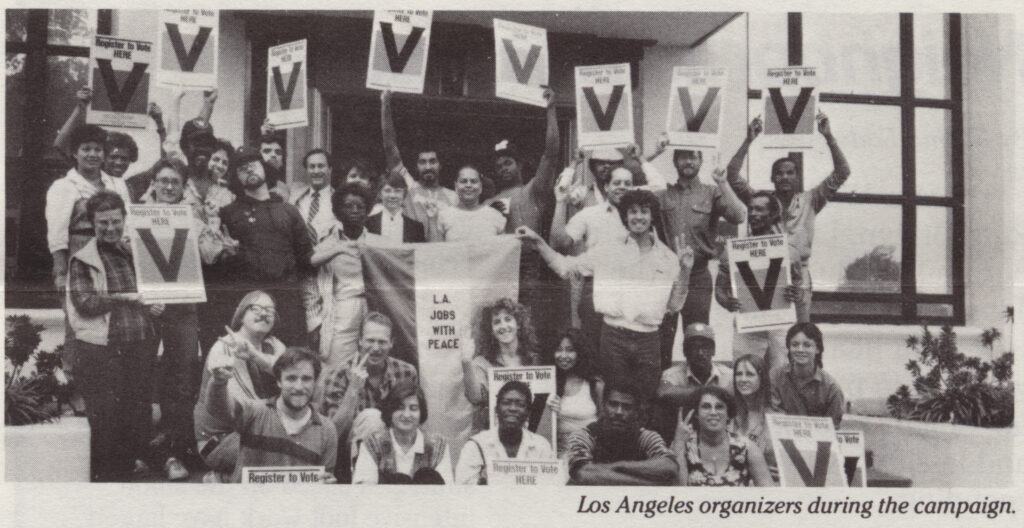
How can progressive political movements win power in geographically expansive and multiracial cities like Los Angeles? The answer, according to the Los Angeles Jobs with Peace campaign was “coalition architecture,” an intentional strategy to link the interests of organized labor with the peace movement, the women’s movement, and the African American civil rights movement through the shared goal of creating good jobs for all by redirecting money from military to domestic spending. In 1984 and 1986, the campaign backed citywide ballot initiatives and built a network of supporters at the precinct level to turnout voters. The 1984 Proposition X called on the city to research and report on pension and contract funds that flowed to military contractors. It passed by a comfortable margin. Proposition V in 1986 would have established a commission to advise the city on how to redirect funds away from military contractors. Proposition V faced a well-funded opposition campaign from business interests and lost by a wide margin. Despite the defeat, the campaign built an effective get-out-the-vote operation at the precinct level that would be the basis of future progressive victories.
Continue reading “Jobs with Peace”
